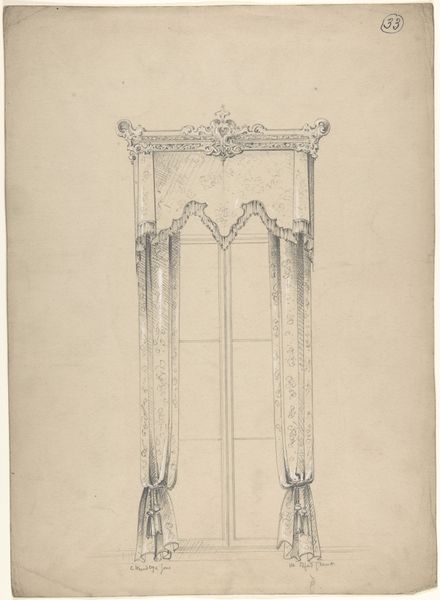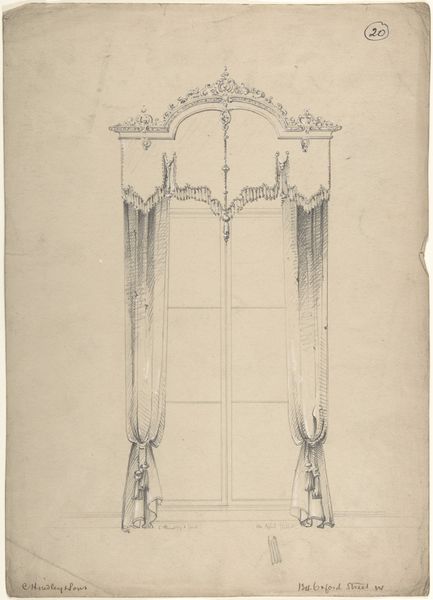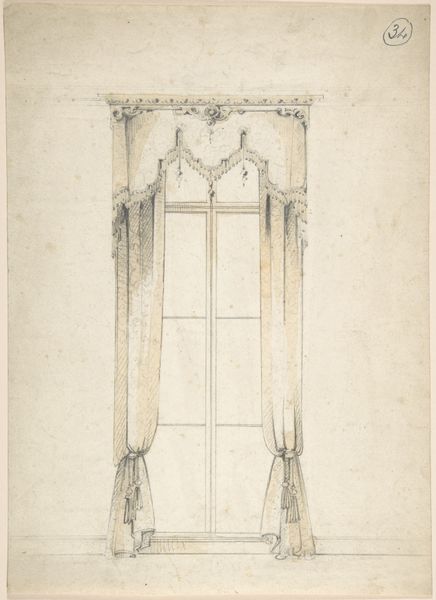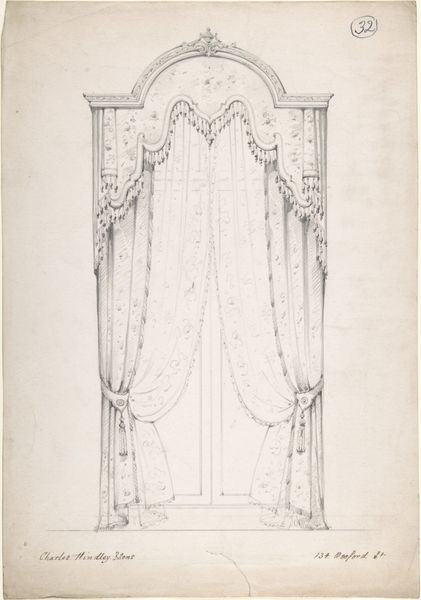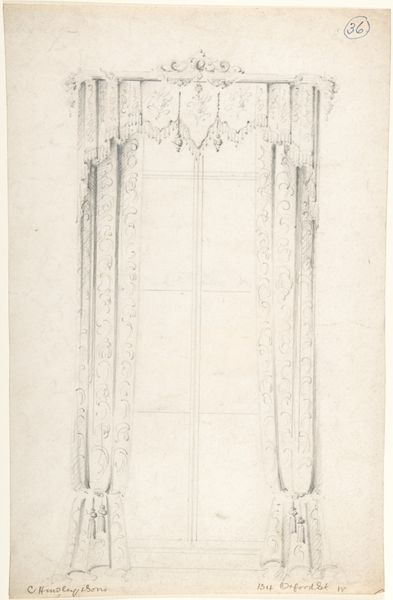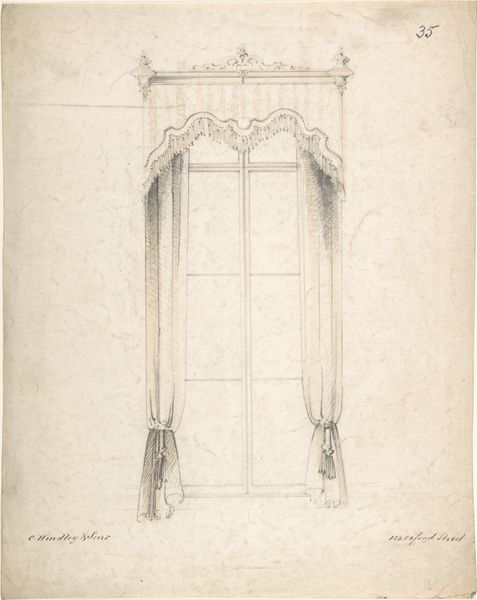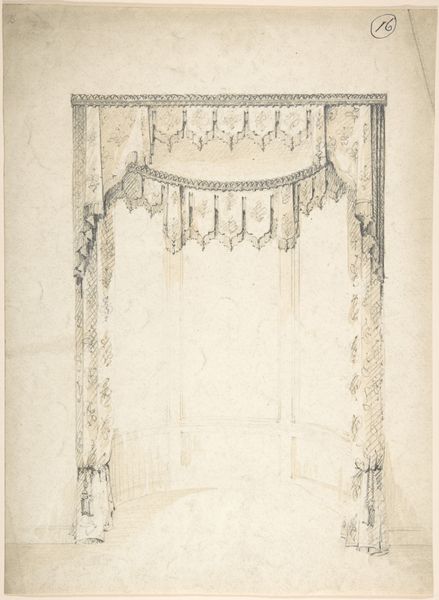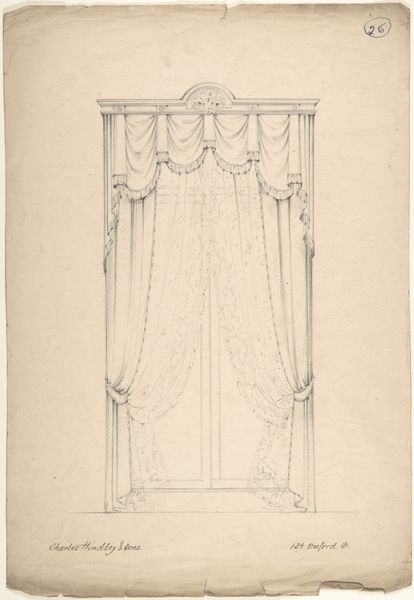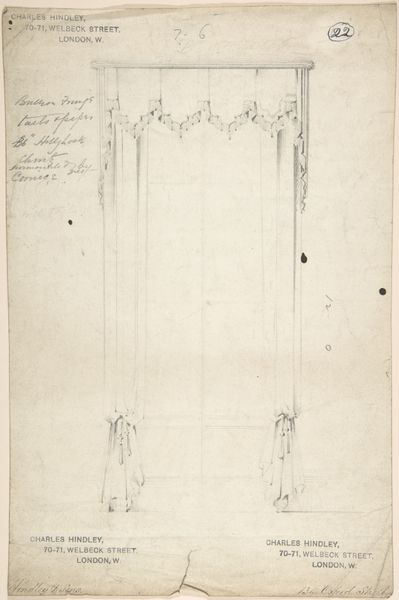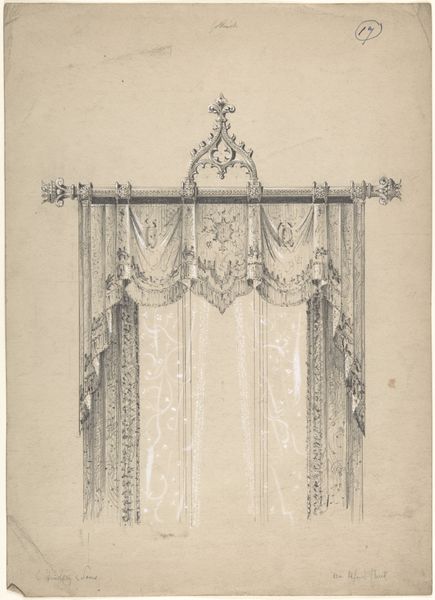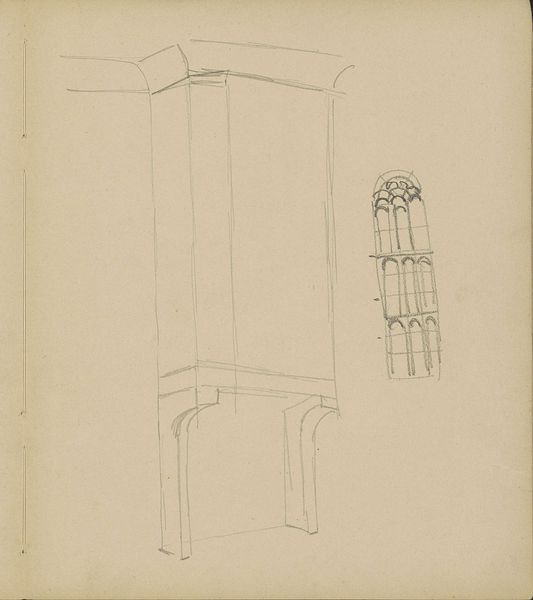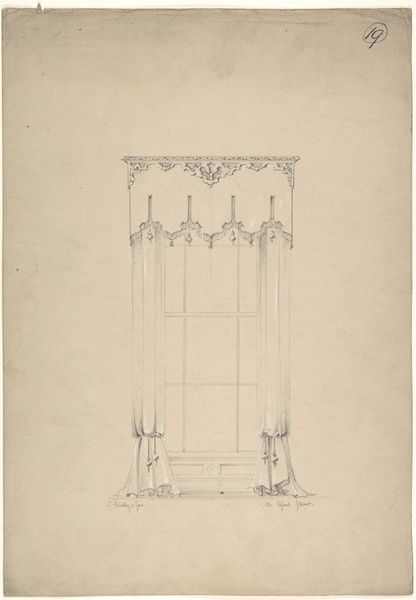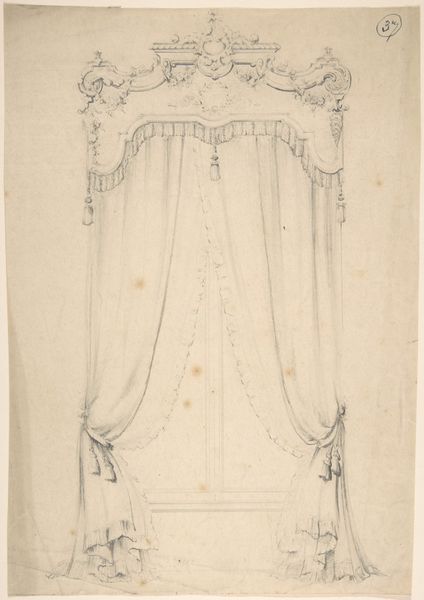
drawing, print
#
drawing
#
aged paper
#
toned paper
#
light pencil work
#
homemade paper
#
ink paper printed
# print
#
pencil sketch
#
sketch book
#
incomplete sketchy
#
personal sketchbook
#
pen-ink sketch
Dimensions: sheet: 14 5/8 x 9 11/16 in. (37.1 x 24.6 cm)
Copyright: Public Domain
Curator: Up next is a pen and ink with pencil sketch titled “Design for Curtains”, attributed to Charles Hindley and Sons, dating between 1841 and 1917. What catches your eye first here? Editor: The aged paper, definitely. It's a drawing, yes, but the textures achieved through light pencil work and shading… there’s a depth to the image. Curator: Hindley and Sons were prominent London-based cabinet makers and upholsterers, and designs such as this give us insight into the aesthetic sensibilities of the Victorian era, and their focus on craftsmanship. Notice the delicate details. Editor: Precisely. See how the ornamental trim contrasts with the implied smoothness of the curtains. The eye is led not just to the subject of the drawing, but invited into a broader awareness of texture. I want to touch it! Curator: Indeed! And this sketch provides social commentary too, it gives us a lens into the Victorian interior and the values associated with domestic space, where the material signifies a certain level of status. Editor: Absolutely. And technically speaking, look at how the light falls. The sketch’s details gives an illusion of three dimensions even on toned paper! It emphasizes luxury, not only of materials but of craft. Curator: Yes, design was important in this period! What’s interesting is that Charles Hindley and Sons participated in major exhibitions, shaping and responding to popular taste but they also worked for prestigious clients, including Queen Victoria. Their aesthetic defined the home. Editor: Which goes back to the power of visual design itself, doesn’t it? Here, we can see the emphasis placed not merely on function, but on achieving an environment. One wonders if these curtains were ever made. Curator: Whether or not the curtains ever materialized, this "Design for Curtains" provides insights into the complex relationship between design, social class, and cultural identity of the period. Editor: For me, its power rests in its composition. The simple contrast that provides us with this moment of reflective pleasure and design wonder.
Comments
No comments
Be the first to comment and join the conversation on the ultimate creative platform.
